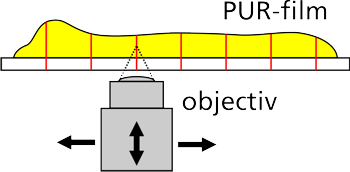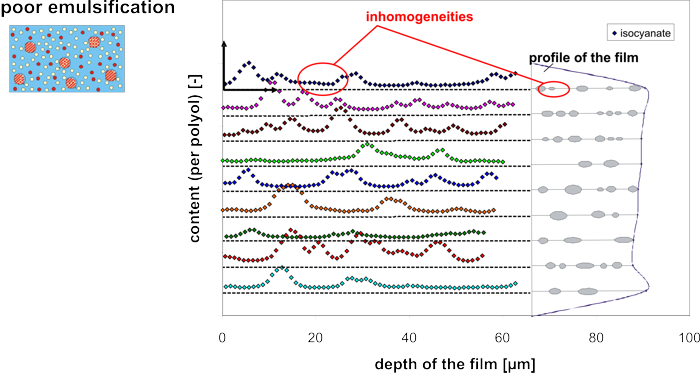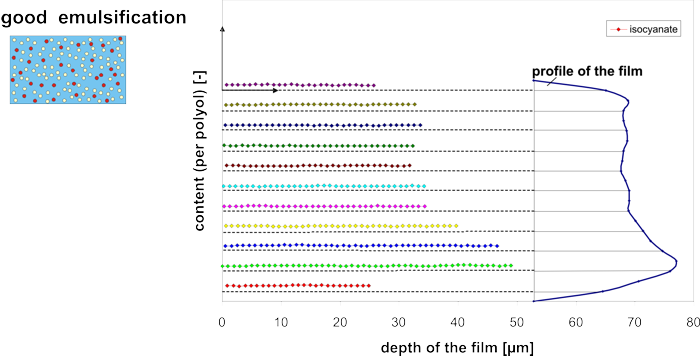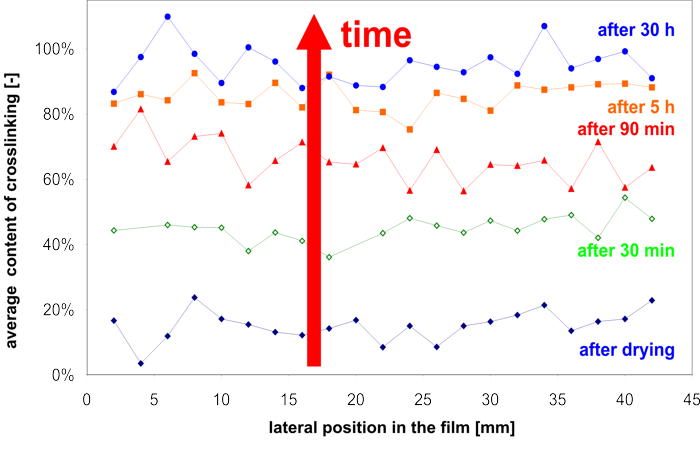Monitoring the drying and curing of two component waterborne polyurethane coatings with Inverse-Micro-Raman-Spectroscopy
- contact:
We like to thank Rhodia (Lyon) for this interesting research topic and the financial support of this work.
Project description
Inverse-Micro-Raman-Spectroscopy (IMRS) enables measurements of composition changes in thin polymer films. It is possible to distinguish a huge amount of components with in multi-component systems such as waterborne polyurethane coatings. Thus, the drying and curing (crosslinking) of 2K-PU coatings can be monitored by x,y and z scans of the film and inhomogeneities can be detected.

One challenge to improve waterborne polyurethane Films is that polyisocyanate also reacts with the water (see reaction below). The emerging carbondioxid and the polyurea itself cause defects in the film and bad physical properties. Therefore a good system disables the side reaction. Detecting the amount of polyurea allows controlling the quality of a film.


Plotting the local content of the components (e.g. isocyanate) on several lateral positions over the depth of the film, it could be shown, that for a poor emulisfication the films always show inhomogeneities.

In the case of good emulsification the films show no inhomogeneities for all components (e.g. isocyantate). This demonstrates that it is very important to ensure a good emulsification. By plotting the average content of crosslinking obtained in each lateral measurement position, the increase of crosslinking with time can be visualised. A fast crosslinking is necessary for a good performance in the practice. 


